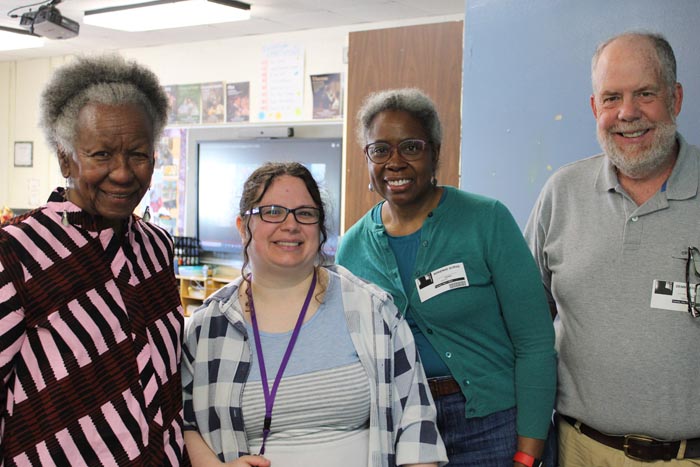
On ILoveNY.com on June 18, 2024
New Paltz, NY – As part of the organization’s commitment to telling the stories of the marginalized inhabitants of Historic Huguenot Street (HHS), the museum has partnered with the Witness Stones Project, Inc. (WSP), based in Connecticut. Similar to the German Stolpersteine Project that commemorates victims of the Nazis, the WSP works to restore the history of enslaved individuals who helped build this country, and honor their humanity.
HHS has commissioned two commemorative markers, memorializing Susanna and Anthony, the first two individuals on record to have been enslaved by a New Paltz Patentee. Records indicate that Susanna and Anthony were purchased by Louis DuBois at public auction in Esopus around 1673/74, approximately 350 years ago. Not long after their enslavement by DuBois, the pair self-emancipated, presumably returning to the estate of their former enslaver, Colonel Lewis Morris.
A dispute over the ownership of Susanna and Anthony resulted in lengthy legal proceedings (1675-1680), which ultimately gave Col. Morris legal ownership.
The production of these memorial markers has been funded by Andreas du Bois, a direct descendant of Louis du Bois’ brother. Andreas’ generous contribution was inspired by this project and the organization’s work to expose the history of enslavement in the Hudson Valley.
In partnership with the Ulster County BOCES Center for Innovative Teaching & Learning at Port Ewen, HHS and WSP have been engaging high school students in in-class workshops and on-site tours and activities to study the history of slavery in New Paltz, and examine primary documents related to Susanna and Anthony’s story to gain insight and inspiration for poetry and art being developed as a part of this program.
A selection of the students’ work and a public unveiling of the markers will be presented at this year’s New Paltz Juneteenth Jubilee, hosted by the Dr. Margaret Wade-Lewis Center (MWLC) at Historic Huguenot Street, on Wednesday, June 19, 2024. The Juneteenth Jubilee is a free community event. Over the next week, a full schedule of presentations and programming for this event will be made available on both HHS and MWLC’s websites.
It is a goal of HHS to continue this important work. As archival records indicate that every Patentee family would go on the become enslavers, over the next several years, the organization intends to memorialize many more individuals who were enslaved here and develop relevant programming that supports community efforts to reconcile with this difficult and complex past.
For more information on Susanna and Anthony’s story, you may access a recording of the virtual program, “Agency and Ownership: The Story of Anthony and Susanna,” via HHS’s Virtual Programming webpage, which was presented by HHS’s Tours & Interpretation Manager, Eddie Moran, on Thursday, May 30, 2024: https://www.huguenotstreet.org/virtual-programming
About Historic Huguenot Street
A National Historic Landmark District, Historic Huguenot Street (HHS) is a 501(c)3 non-profit dedicated to preserving a pre-Revolutionary Hudson Valley settlement and engaging diverse audiences in the exploration of America’s multicultural past, in order to understand the historical forces that have shaped America. As an educational institution founded by the town’s French-speaking Protestant descendants and chartered by the University of the State of New York Department of Education, HHS explores the lives of the early European colonists, honors the region’s Indigenous people, and acknowledges the enslaved and disenfranchised peoples who built this place. Today, HHS is recognized as an innovative museum and community gathering place, providing visitors with an inclusive presentation of our shared past. For more information visit www.huguenotstreet.org.




